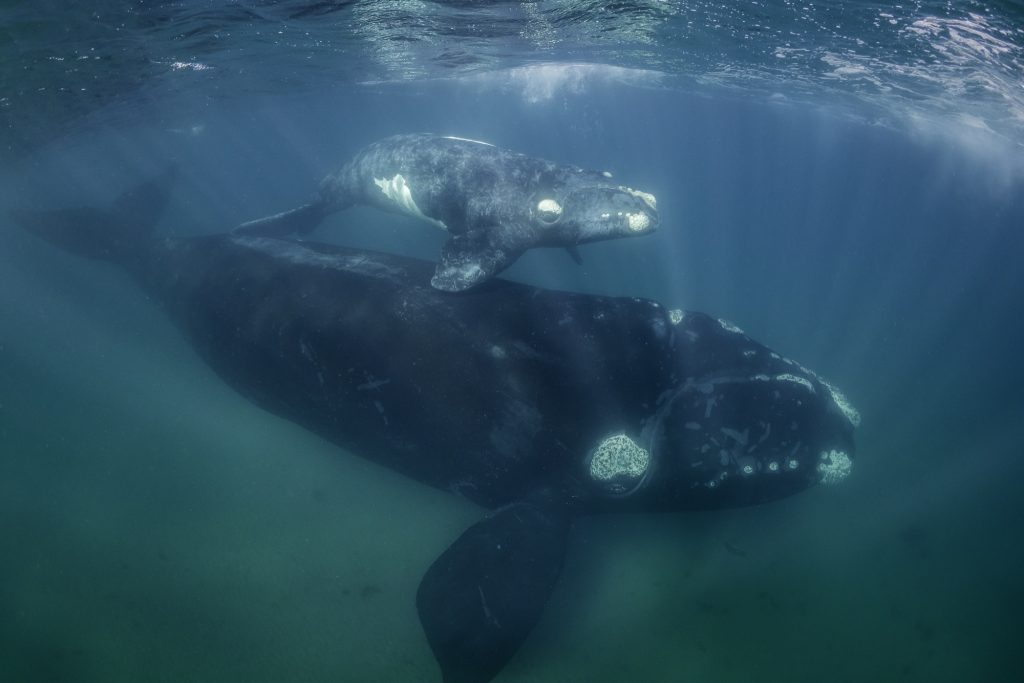At a time when some argue that North Atlantic right whale fatalities are a direct consequence of offshore wind activities, the ocean conservation organization Oceana issued an October report showing frequent vessel strikes as a major threat to the endangered sea mammals.
The Oceana report presents data on the number of vessels 65 feet or longer along the Atlantic coast that frequently exceed mandatory and voluntary speed limits established to protect the right whale. One data point showed that over two mating seasons, from 2020 to 2022, 75% of vessels did not comply with speed restrictions.
In 2008 the National Marine Fisheries Service, part of the National Oceanic and Atmospheric Administration, established its vessel speed rule. The rule set up two types of right whale conservation areas, with speed restrictions in those areas for all vessels 65 feet of length or longer.
There were 10 demarcated seasonal management areas from Maine to Florida. Requirements were established for mandatory speed limits when vessels are in these areas.
The second type of area, called a dynamic management area, is temporarily established when three or more right whales are seen based on vessel sightings in a specific area. In these areas speed restrictions are voluntary. A dynamic management area designation may last for two weeks and then be lifted, unless more sightings extend it.
Oceana’s October report, along with one done in 2021, showed a high percentage of vessels ignoring the speed restrictions. According to the latest report, 86% of vessels exceeded the 10-knot speed restriction in seasonal management areas near ports in New York and New Jersey, the highest violation percentage along the East Coast. Over 40% of the speeding vessels were cargo ships.
The speed limit of 10 knots was established because previous studies showed that 10 knots reduced a right whale’s risk of death from strikes by between 80% and 90%.
Oceana has called on NOAA to take steps to modernize the 2008 rule. The organization wants the established seasonal management areas updated, arguing that ship routes have changed in the last 15 years.
The group also wants NOAA to reduce the vessel length requirement from 65 feet to 35 feet to bring more vessels under the rule and to make speed restrictions in designated management areas mandatory rather than voluntary. It wants more emphasis placed on compliance and enforcement.
NOAA maintains its own dashboard with data on vessel speeds in seasonal management areas. That dashboard does not present as dire a picture as that presented by Oceana. Data for November 2022, for example, show 29% of vessels exceeding the 10-knot speed limit, with the biggest offenders being pleasure vessels. The NOAA dashboard looks at all vessels traveling in a seasonal management area and not just those 65 feet or longer.
Oceana has made available a Ship Speed Watch tool that allows users to monitor ship speeds in voluntary and mandatory speed zones.
Contact the author, Vince Conti, at vconti@cmcherald.com.









